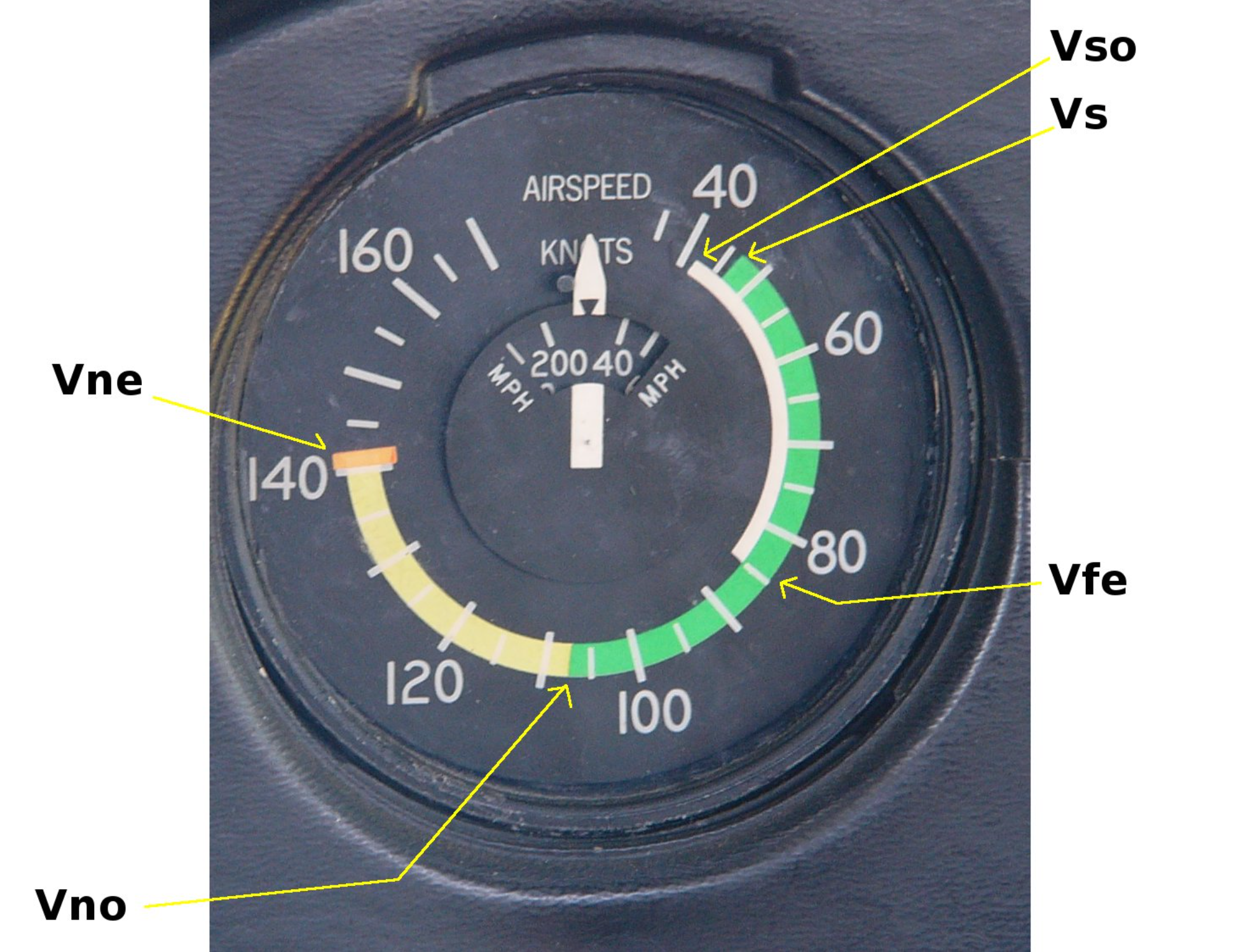V-speeds

In aviation, "V-speeds" refer to a set of standardized airspeeds that pilots must be aware of for the safe and efficient operation of an aircraft. These speeds, prefixed with "V," represent critical airspeeds for different phases of flight, from takeoff and climb to landing and specific maneuvering. The term "V" is derived from the French word "vitesse," meaning "speed".
The development of V-speeds dates back to the early era of powered flight. As aircraft designs advanced, the need for precise and standardized performance speeds became essential, particularly for takeoff and landing. Standardization enabled engineers and pilots to communicate operational limitations and performance expectations clearly and uniformly. Today, these speeds are codified into aircraft operating manuals and regulatory guidance worldwide.
Key V-speeds
- V1 (Takeoff Decision Speed): The maximum speed during takeoff at which the pilot must begin braking and reducing thrust to stop within the accelerate-stop distance. It’s also the minimum speed after engine failure at which takeoff can be continued.
- V2 (Takeoff Safety Speed): The minimum speed required to maintain a safe climb with one engine out. Typically equal to V1 for jet aircraft.
- VX (Best Angle of Climb Speed): The speed that gives the greatest altitude gain for the shortest horizontal distance.
- VY (Best Rate of Climb Speed): The speed that gives the greatest altitude gain over time (best vertical speed).
- VA (Maneuvering Speed): The maximum speed at which full, abrupt control movements can be made without overstressing the aircraft.
- VS (Stall Speed): The speed at which the aircraft first exhibits signs of aerodynamic stall in a specific configuration.
- VNO (Maximum Structural Cruising Speed): The maximum speed at which the aircraft can be safely flown in turbulent air without exceeding structural limits.
- VNE (Never-Exceed Speed): The maximum airspeed the aircraft can reach without risking structural failure.
- VFE (Maximum Flap Extended Speed): The top speed at which it is safe to fly with the flaps fully or partially extended.
- VMC (Minimum Control Speed): The minimum speed at which the aircraft can be controlled with one engine inoperative.
Pilots rely on these values when conducting performance planning, configuring aircraft for different phases of flight, and reacting to in-flight emergencies. For example, knowing VMC is crucial in asymmetric thrust conditions, and VNE ensures the airframe is not subjected to destructive aerodynamic loads.
V-speeds are established by manufacturers and certified during the aircraft approval process. They are based on extensive flight testing, engineering analysis, and regulatory requirements. The proper use and understanding of V-speeds not only enhances flight safety but also supports the aircraft’s structural integrity and performance efficiency across a range of operational conditions.
